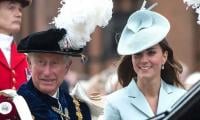Literary losses of Sindh
Being a cornucopia of ethnic and linguistic diversity, Pakistan presents a rich cultural and literary variety. But somehow if you conduct a survey with university students in Khyber Pakhtunkhwa and Punjab, there will be little evidence that our youth knows much about Balochistan and Sindh or about their educationists, poets, scholars, and writers.
Within a short span of two months, Sindh has lost three of its outstanding personalities who have left an indelible mark on Sindh’s educational and literary heritage. Imdad Hussaini, Mama Juman Darbadar, and Dr Habibullah Siddiqui contributed in their peculiar style to our understanding of the challenges that Sindh has faced over the past decades, if not centuries. All of them had a desire to explain the intricacies of Sindh’s past and present through their writings, which have been compiled in books. Imdad Hussaini and Juman Darbadar had their distinguished style of poetry whereas Habibullah Siddiqui was an educationist and research scholar.
Syed Imdad Ali Shah Hussaini was a celebrated poet who died in Karachi aged 82 in August, 2022. The last time I met him at the Sindh Literary Festival in March he was frail, still with a spark of creativity. After we lost the towering personalities of Sobho Gianchandani in 2014 and then Ibrahim Joyo in 2017, Imdad Hussaini was arguably the most senior literary stalwart of Sindh. It was always such a stimulating experience to listen to his poetry which he recited with his characteristic tone and tenor.
A few years back, our young journalist and organizer of the SLF Naseer Gopang introduced me to Imdad Hussaini who was kind enough to sign his books for me. He was pretty encouraging with the younger generation of Sindhi poets and writers and commanded immense respect in literary circles across Pakistan. Asked about the secret of his proficiency in languages, he would attribute it to his father Ghulam Asadullah Shah Fida who himself was a poet and scholar of Arabic, Persian, and Sindhi, with a political leaning towards the Khilafat Movement.
Imdad Hussaini’s understanding of Sindhi folk literature and tradition was exemplary and he could talk about it for hours; perhaps that was thanks to his early work as librarian in the Sindhi Adabi Board and as a research fellow with the Institute of Sindhology. In addition to poetry, his contribution to the Sindh Textbook Board was outstanding as he was responsible for editing syllabi for schools and colleges. His literary life spanned over 50 years in which he was tireless till his advanced age when he started suffering from severe bouts of asthma and pulmonary issues.
Hussaini remained associated with various Sindhi publications such as ‘Gul Phul’, ‘Mehran’, and monthly ‘Surtiyoon’. As one of the most well-acknowledged and recognized Sindhi poets, he received dozens of awards in his lifetime. Though his primary claim to fame was poetry, he contributed to drama, fiction, and non-fiction prose too. His production and script of TV show ‘Jar Gul Gulab’ carried the idea of childhood development and was highly instructive. The Sindhi film industry could never take off but whatever it was, Hussaini wrote songs for three Sindhi movies ‘Dharti lal Kunwar’, ‘Hazar Saeen’, and ‘Sonhra Saeen’.
Not many Sindhi poets have tried their hand at Urdu poetry too; after Shaikh Ayaz, among others it was Imdad Hussaini who penned excellent Urdu poetry. He was a prominent translator too and through his translations tried to bridge the gap between different languages. He translated Mirza Qaleech Baig’s celebrated novel ‘Zeenat’ into Urdu. His other Urdu translations were a historical epic tale ‘Sindh’ and ‘Dodo Chanesar’. His published works included ‘Hawa Jay Samhoon’ Shehar’, Imdad Aahay Rol, Kirney Jehro Pal’. He also translated Punjabi and Saraiki poetry of Farid and Madhu into Urdu.
Juman Darbadar who left us on Oct 20, 2022 at age 78, was an entirely different breed of poets. Thanks to Prof Amar Sindhu and Arfana Mallah, I had the good fortune of meeting him at the Hyderabad Festival. He belonged to Umerkot and apart from poetry he distinguished himself as a veteran activist who raised his voice for the rights of farmers. He was truly a people’s poet whose verses resonated in political rallies and literary events alike. In any social gathering if you found Mama Juman, he would be the star attraction. With a marvelous sense of humour, he mesmerized his audiences.
Satire was also his forte that he brilliantly mixed with a sense of rebellion against all oppressors in Sindh. His rebel anthem ‘Wathi Har Har Janam warbo’ (In every age we will return) is highly popular across Sindh. It is so heart-rending that if you understand Sindhi well it is hardly possible not to have goosebumps. Many famous and popular singers have sung this anthem but the way Mama Juman rendered it was unmatchable. It would not be out of place if I reproduce here Asad Alvi’s brilliant translation of this anthem:
“Waves rising in the Sindhu river, that is all we desire; The poor bathing in the Sindhu, that is all we desire; We’ve lived in misery for ages now, my Lord; Let waves rise in the Sindhu now, that is all we desire; In every age, we will return; My love, on the banks of Sindhu we will meet; When the darkness passes, on that full moon night we will meet; This long, relentless war of ours, we will champion like stallions wild; The enemy will die at last – on that scented day we will meet; The martyrs of our land have done us a million favours. On their altars crimson-soiled, we will meet.”
Those familiar with Sindhi poetry will instantly recall ‘Teerhi Pawanda’ by Shaikh Ayaz. We used to sing it with Shahid Bhutto and friends while working for Dastak Theatre Group in Karachi in the dark days of General Zia. It goes something like this: when the flowers flourish, we will reunite and when the cranes return making loud noises and in groups, we will meet. Mama Juman could instantly develop a camaraderie with all his listeners and anybody who talked to him. Ali Zahid has written a befitting biography of Juman Darbadar that is worth reading.
Jami Chandio – a renowned scholar and writer – paid tribute to Juman Darbadar in the following words: “Mama Juman was a bohemian who never claimed that he was a great poet or politician or a scholar. His greatness lay in his complete lack of pretensions, as he never suffered from any identity crisis of existence. He was a free spirit to the core.”
Dr Habibullah Siddiqui was essentially an educationist and researcher who died at the age of 85 on Oct 22, 2022. Having served as principal of several government colleges in Sindh, he groomed thousands of students. As director of the Bureau of Curriculum and chairman of the Sindh Textbook Board, he contributed immensely to the education sector in Sindh. I did not know much about him until I came across his marvelous book titled ‘Education in Sindh: Past and Present’, that the Institute of Sindhology published in 2006. Then I had the good fortune of working for a while on an education project with two of his family members Abdul Latif Siddiqui and his son Amir Latif.
Habibullah Siddiqui had a doctorate in Muslim history and authored over a dozen books in English and Sindhi including ‘Insaan Ki Tareekh’ (The human history) in two volumes, and ‘Son of the desert’ which is a biography of Z A Bhutto. Imdad Hussaini, Juman Darbadar, and Habibullah Siddiqui made Pakistan richer with their distinct educational, intellectual, and literary works.
Email: mnazir1964@yahoo.co.uk
Twitter: @NaazirMahmood
The writer holds a PhD from the University of Birmingham, UK.
-
 Kate Middleton And Meghan Markle's Decade-long Tale Unfolds
Kate Middleton And Meghan Markle's Decade-long Tale Unfolds -
 Kate Middleton Shares Unexpected Insight From Her Cancer Journey
Kate Middleton Shares Unexpected Insight From Her Cancer Journey -
 Kate Middleton's Birthday Marked By Westminster Abbey Bell-ringing
Kate Middleton's Birthday Marked By Westminster Abbey Bell-ringing -
 Prince Harry's Security Review Still Underway: Report
Prince Harry's Security Review Still Underway: Report -
 Netflix Sci-fi Series Black Mirror Gets An Eighth Season
Netflix Sci-fi Series Black Mirror Gets An Eighth Season -
 Amy Madigan Recalls Husband Ed Harris’ Reaction To Her Transformation In 'Weapons'
Amy Madigan Recalls Husband Ed Harris’ Reaction To Her Transformation In 'Weapons' -
 Sarah Jessica Parker Drops Rare Insight Into 30-year Marriage
Sarah Jessica Parker Drops Rare Insight Into 30-year Marriage -
 Will Venezuela Rebuild Diplomatic Relations With US?
Will Venezuela Rebuild Diplomatic Relations With US? -
 Elton John Shares How He Shaped An Entertaining Persona
Elton John Shares How He Shaped An Entertaining Persona -
 Paul Mescal Hints At New Artistic Turn After Stepping Into McCartney’s Shoes
Paul Mescal Hints At New Artistic Turn After Stepping Into McCartney’s Shoes -
 Kendall Jenner Reveals She's In Her 'me Era' After Consistent Relationships
Kendall Jenner Reveals She's In Her 'me Era' After Consistent Relationships -
 Sadie Sink Reflects On Consistent Identity Over The Years
Sadie Sink Reflects On Consistent Identity Over The Years -
 Duchess Sophie Sounds Alarm On 'worst Humanitarian Crisis'
Duchess Sophie Sounds Alarm On 'worst Humanitarian Crisis' -
 George Clooney Gets Candid About Self Perception
George Clooney Gets Candid About Self Perception -
 World Oceans Absorbed Record Heat In 2025, May Trigger Intense Climate Crises, Says Report
World Oceans Absorbed Record Heat In 2025, May Trigger Intense Climate Crises, Says Report -
 George Clooney Reflects On Friendship With Paul McCartney
George Clooney Reflects On Friendship With Paul McCartney



